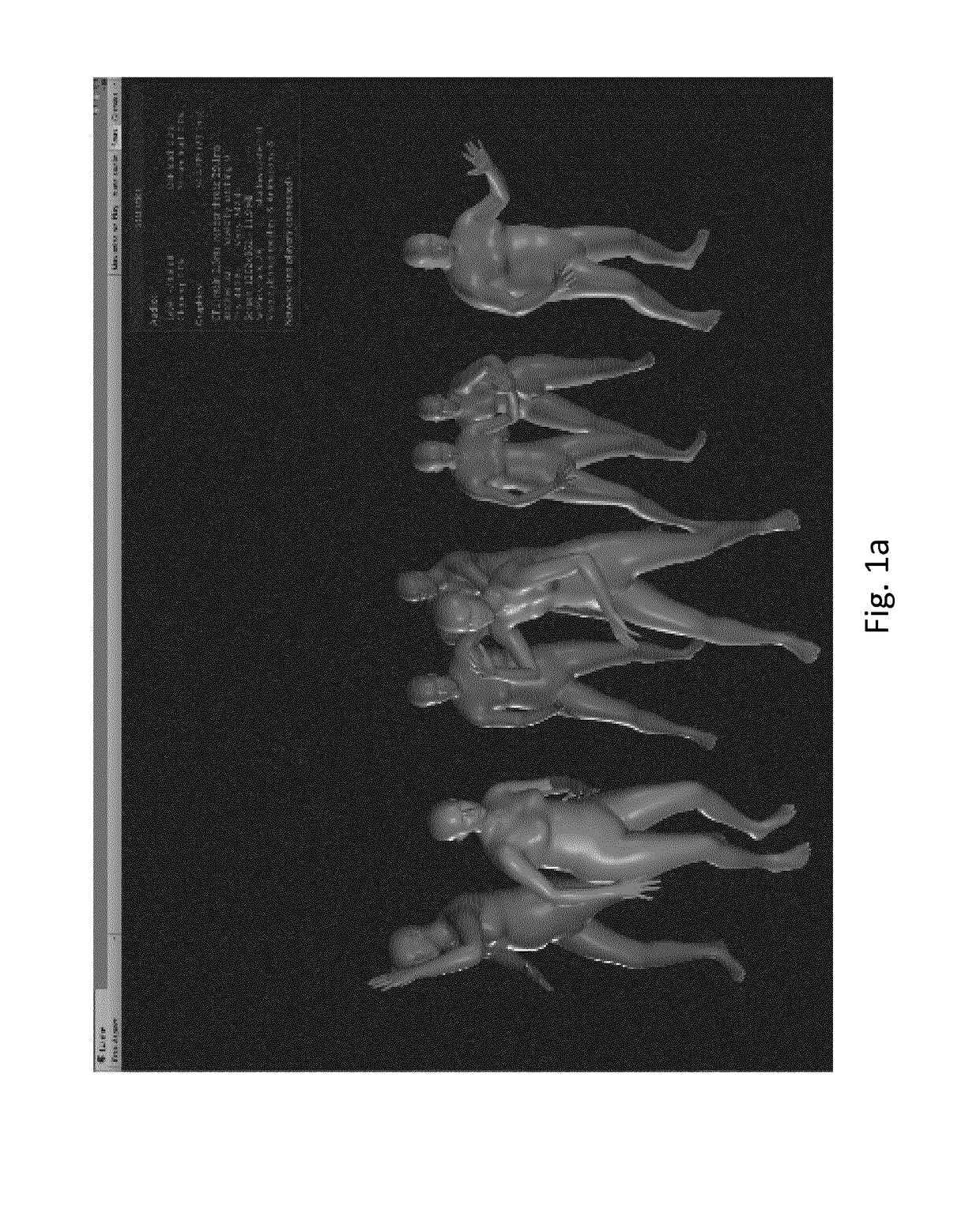Skinned multi-person linear model
a multi-person, linear model technology, applied in the field of skinned multi-person linear models, can solve the problems of unrealistic deformation at joints, large manpower required to build them, and incompatible approaches with existing graphics software and rendering engines that use standard skinning methods, etc., to achieve reasonable face and hand detail, simple vertex topology
- Summary
- Abstract
- Description
- Claims
- Application Information
AI Technical Summary
Benefits of technology
Problems solved by technology
Method used
Image
Examples
Embodiment Construction
[0049]FIG. 1 shows a realistic learned model of human body shape and pose according to a first embodiment of the invention that is compatible with existing rendering engines and allows animator control using standard graphics tools. (left) SMPL model (orange) fit to ground truth 3D meshes (gray). (right) Unity 5.0 game engine screenshot showing bodies from the CAESAR dataset animated in real time.
[0050]FIG. 2 compares models with ground truth. More particularly, the inventive model is trained in various forms and compared quantitatively to a BlendSCAPE model [Hirshberg et al. 2012], trained with exactly the same data. The models are both evaluated qualitatively with animations and quantitatively using meshes that were not used for training. SMPL and BlendSCAPE are fit to these meshes and then the vertex errors are compared. Two main variants of SMPL are explored, one using linear blend skinning (LBS) and the other with Dual-Quaternion blend skinning (DQBS).
[0051]The far right (light...
PUM
 Login to View More
Login to View More Abstract
Description
Claims
Application Information
 Login to View More
Login to View More - R&D
- Intellectual Property
- Life Sciences
- Materials
- Tech Scout
- Unparalleled Data Quality
- Higher Quality Content
- 60% Fewer Hallucinations
Browse by: Latest US Patents, China's latest patents, Technical Efficacy Thesaurus, Application Domain, Technology Topic, Popular Technical Reports.
© 2025 PatSnap. All rights reserved.Legal|Privacy policy|Modern Slavery Act Transparency Statement|Sitemap|About US| Contact US: help@patsnap.com



